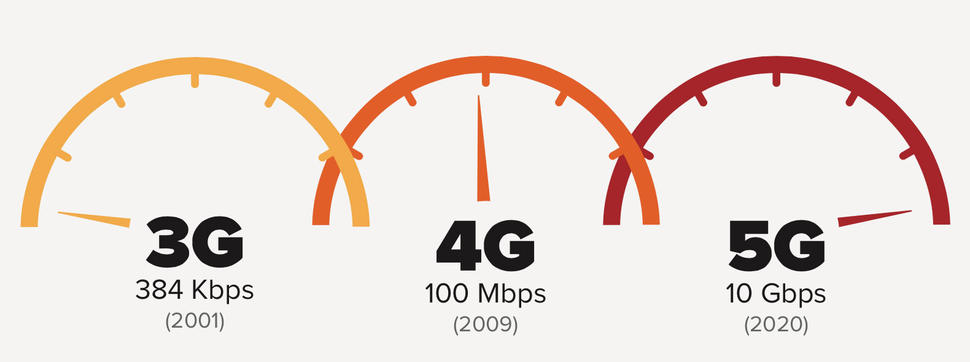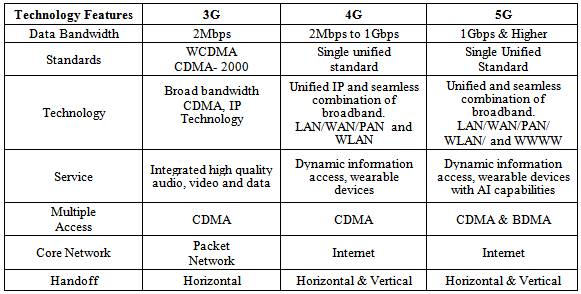5G IS THE NEW GENERATION OF RADIO SYSTEMS AND NETWORK ARCHITECTURE DELIVERING EXTREME BROADBAND,ULTRA ROBUST,LOW LATENCY CONNECTIVITY AND MASSIVE NETWORKING WHICH WILL TRANSFORM OUR LIVES,OUR ECONOMY AND OUR SOCIETY
With the 4G telecommunications systems now starting to be deployed, eyes are looking towards the development of 5th generation or 5G technology and services.
Although the deployment of any wireless or cellular system takes many years, development of the 5G technology systems is being investigated. The new 5G technologies will need to be chosen developed and perfected to enable timely and reliable deployment.
The new 5th generation, 5G technology for cellular systems will probably start to come to fruition around 2020 with deployment following on afterwards.
According to the Next Generation Mobile Network’s 5G white paper, 5G connections must be based on ‘user experience, system performance, enhanced services, business models and management & operations’.
And according to the Groupe Speciale Mobile Association (GSMA) to qualify for a 5G a connection should meet most of these eight criteria:
- One to 10Gbps connections to end points in the field
- One millisecond end-to-end round trip delay
- 1000x bandwidth per unit area
- 10 to 100x number of connected devices
- (Perception of) 99.999 percent availability
- (Perception of) 100 percent coverage
- 90 percent reduction in network energy usage
- Up to ten-year battery life for low power, machine-type devices
 Applications that right now take minutes to download, under 5G, will be available in just seconds. 5G is 100 times faster than 4G, with gigabit-per- second speeds. There is no doubt that 5G is the next major step of telecommunications standards. 5G will be characterized by its high speed and lower latency that will move us towards life automation. Billions of smart objects and devices will be connected. 5G will extend the app market as we know it right know because the possibilities for app development will be huge.
Applications that right now take minutes to download, under 5G, will be available in just seconds. 5G is 100 times faster than 4G, with gigabit-per- second speeds. There is no doubt that 5G is the next major step of telecommunications standards. 5G will be characterized by its high speed and lower latency that will move us towards life automation. Billions of smart objects and devices will be connected. 5G will extend the app market as we know it right know because the possibilities for app development will be huge.
5G cellular systems overview:
As the different generations of cellular telecommunications have evolved, each one has brought its own improvements. The same will be true of 5G technology.

Any new 5th generation, 5G cellular technology needs to provide significant gains over previous systems to provide an adequate business case for mobile operators to invest in any new system.
Facilities that might be seen with 5G technology include far better levels of connectivity and coverage. The term World Wide Wireless Web, or WWWW is being coined for this.
Advantages and disadvantages of 5G
5G will be significantly faster than 4G, allowing for higher productivity across all capable devices with a theoretical download speed of 10,000 Mbps. Plus, with greater bandwidth comes faster download speeds and the ability to run more complex mobile internet apps.
However, 5G will cost more to implement and while the newest mobile phones will probably have it integrated, other handsets could be deemed out of date.
A reliable, wireless internet connection can depend on the number of devices connected to one channel. With the addition of 5G to the wireless spectrum, this could put us at risk of overcrowding the frequency range.
“Current 4G mobile standards have the potential to provide 100s of Mbps. 5G offers to take that into multi-gigabits per second, giving rise to the ‘Gigabit Smartphone’ and hopefully a slew of innovative services and applications that truly need the type of connectivity that only 5G can offer.
5G and the Internet of Things
5G offers the possibility to send and receive data almost instantly, what opens the doorto a new generation of IoT functionalities. It seems that from all technologies the Internet of Things will be one of the main beneficiaries of 5G networks: low latency and extended battery life are only some of the benefits that 5G brings to the development of the internet of things.
5G will allow the improvement and development of those areas of Internet of things were the difference between 40 milliseconds and 2 milliseconds is crucial. The low latency that 5G presents will be very important for driverless cars where the collision with a nearby car depends on data exchange or for remote operations. But the low latency will have real- time applications on the internet of cars or virtual reality healthcare also it will also have an important role in the development of smart cities, manufacturing and logistics.
“While the networking industry is working towards making 4G ubiquitous, we also need to future-proof for 5G, which probably won’t see deployment until 2019 or 2020 at the earliest. It will take that long as a completely new Eco-system needs to form with the right architectures and agreed standards.
“In line with that, the mobile vendors will need to develop the network infrastructure and end user devices such as new 5G capable handsets. Ultimately, the biggest technological challenge confronting the industry will be spectrum availability.
Go ahead
LikeLiked by 1 person
Thnk u
LikeLiked by 1 person